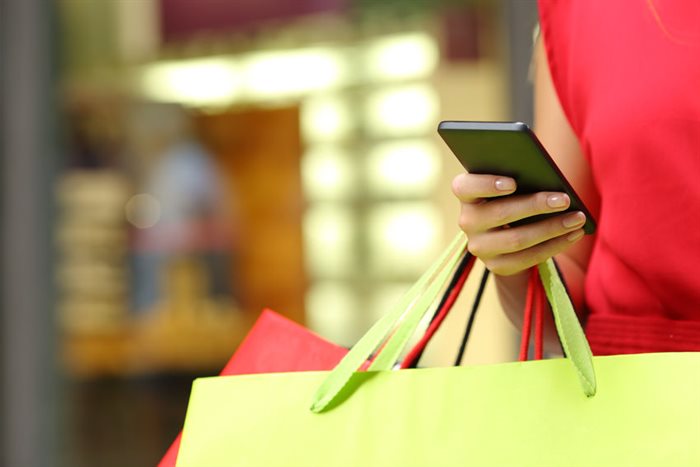SA's R294bn online opportunity - a brave new world of omnichannel integration

The 2022 report producers note that there’s little need to still attribute this to the Covid era, as while the pandemic precipitated a move for many to digital, it has permanently influenced our new online shopping behaviour.
Social selling, the astounding impact of reviews and also how the major impact of online – in all of its facets – is impacting the offline sale is significant. So much so that this report estimates that online product research and discovery influences as much as R293.8bn in physical retail sales across the economy’s top categories of groceries, fashion, medicine/toiletries and furniture/hardware.
The 2022 South African Digital Customer Experience Report is authored by Charlie Stewart, CEO of Rogerwilco, Amanda Reekie, founder of online research platform Ovatoyou, and Julia Ahlfeldt, from Julia Ahlfeldt CX Consulting. Findings are based on the responses from 2,000 South Africans. While the three authors offer the primary insights into the data, the report is also peppered with considerations from 11 seasoned industry veterans including senior marketers from Meta, Woolworths, Zando, TFG, Luno and the V&A Waterfront.
Offline gets a shot in the arm from online activity
Up until very recent times, the very notion of online meant web or app. This could not be further from the current truth. Online refers to every single interaction a brand can have with its customers, through a multitude of digital touchpoints. This includes social selling, marketplaces, search engines and reviews, among many more.
Consider how many consumers simply use the internet to browse for products, only to buy them in store when discounts come around, or those who consume reviews so as to get a true and accurate picture of what they are considering to purchase, before any money is exchanged.
Social selling is a significant area to note, accounting for 10% of all e-commerce sales. As part of the ‘new’ online journey, it is done through buying directly via Instagram, Facebook Shops and WhatsApp, where these portals are as much online pathways to purchase as a now ‘old-school’ e-commerce website is.
“What we need to acknowledge is that online is far more complex than we had realised – and that selling can come from almost anywhere online,” says Julia Ahlfeldt. “Brands need to grasp that new channels of trade are on the rise, and that even if purchases don’t happen online, that’s where many customer journeys begin. Brands may be missing valuable opportunities by limiting the channels that they trade through.”
Take Facebook and Instagram as a case in point: 48% of consumers purchase through these social media platforms.
It’s key to also note, she says, that it’s not just small businesses who are leaning into these ‘alternative’ e-commerce commercial avenues, but global juggernauts such as H&M too.
Following the digital crumbs to the storefront
In this fourth annual report, among the most significant insights is that online discovery and browsing morphs into a massive increase in offline sales.
While before brands may have dismissed a Google review potentially leading to an in-store purchase, it is imperative that they now take note that any activity taken online – browsing, researching, comparing, looking at reviews, etc. – is all done with a means to an end: the consumer wants something but is using the ease of use of online to gather all their information, even though they will most likely make the sale in the physical store.
Woolworths, for instance, notes that over 60% of its online browsers claim to buy in-store which has reinforced its focus to lead in omnichannel retail.
Charlie Stewart urges brands to reconsider their thinking, saying that “It’s dangerous to disregard other channels and transactions that contribute to the broader construct of online shopping – these are no longer niche behaviours. Our research suggests that it’s time to rethink – and broaden – their definition of e-commerce in keeping up with the actual consumer behaviour.”
Rise of the metaverse
Notwithstanding the integration between online and offline, one key finding from this year’s study is the emergence of the consumer interaction with the metaverse. Fascinatingly 53% claim to have never heard of it, while a further 23% don’t know what it is. Only one percent have actually bought something through the metaverse.
Fans are calling the Metaverse Web 3.0, while skeptics are calling it a gimmick. While it is still to be fully understood, a whopping 79% of surveyed consumers said they would engage with it in future, demonstrating that there’s clearly an eagerness to do so.
The last mile is the only mile
Never before has there been such competition among such an unsexy thing: logistics. Getting demand delivery right is the new commercial battlefield and it is those that deliver the fastest and at the best price that will win - particularly as consumers insist on next or same-day deliveries.
But, the financial reality is that while being first to drop and go is what the market wants, it is a high cost to company. Even Checkers’ Sixty60’s margins are small and one could argue don’t necessarily warrant the expense of a delivery. But on-demand is the new normal and brands have little choice but to make their deliveries accessible, seamless and affordable - while still finding ways to be financially sustainable.
“The reality is it is expensive to run a fleet of drivers, delivering smallish items or a box of goods – and even more expensive if the goods need to be recollected if they are not the right size, etc. In this instance, some brands in the UK have even started charging consumers a fee for returns.
“Brands are either having to charge for shipping or get consumers to cross a minimum payment threshold to be eligible for free shipping and in so doing they risk the chance of cart abandonment as consumers are simply not willing to pay more for an item they’d find in store. It’s most definitely a conundrum for all brands, especially smaller brands who cannot absorb excess costs, but even larger businesses like Takealot are going to need to resolve this in the medium term,” says Reekie
Demonstrating this through the data, 65% of the sample said high shipping costs deterred them from checking out – up a staggering 14% from the 51% who listed this as a barrier in 2021. Unfortunately for brands, cost is now becoming a key factor in the delivery consideration process.
International brands set to shake-up local competition
Amazon, in a long-mooted move, will finally open in South Africa around February 2023. This is thrilling for consumers but a headache for local brands. Consider Takealot. Regarded as the darling of the e-commerce world (22% say it is their shopping place of choice), with its universe of products it is quick, easy and offers reliable delivery.
But in fewer than six months Amazon arrives on our shores and is expected to bring with it its suite of product catalogues as well as its vaunted Prime service, which bundles delivery with access to Amazon TV. Will the slick experience prove to be too much for Takealot loyalists to withhold?
“No brand, regardless of size or product, 'owns' the customer, conversely the customer is given a smorgasbord of shopping options, often comparing international sites or pages with local varieties. It’s certainly a dog-eat-dog world, which is why local brands must up their ante to guarantee that they can confidently stand-up against, or alongside, international apps, and offer a seamless customer experience that keeps up with the next best customer experience out there,” comments Ahlfeldt.
Good keeps brands in the game, bad does untold damage
Against all of this mentioned above, the hard facts are that consumers – when they are unhappy or disgruntled – will tell others about it: 43% will take their grievances to social media. Exactly half would tell their family and friends. “This puts huge pressure on brands. Given switching is so easy, brands need to retain their customers’ happiness and put in place guardrails to prevent issues from occurring as far as possible,” says Reekie.
Then there’s that little chestnut of cart abandonment. Seventy percent are pulling out from the sale at the last minute (down from 2021’s 76%) and are mostly frustrated by payment failure, high shipping fees, clunky sites and slow delivery. Given this, this year the authors estimate that the cost of cart abandonment could be as high as R26.621 billion.
When issues do invariably arise, consumers are still prone to turn to email and call centres first (21% each). But human interaction trumps even these traditional channels as consumers want a human to help them with their issue. And while chatbots may be quicker in theory, in reality they can backfire. This is evidenced by the fact that only 17% would turn to chat as their first port of call.
“It’s clear from this fourth year of research that consumers are savvier about how to use all of online, from social media to chat platforms, in addition to web and app, all the while expecting better service and delivery. They are beginning to dabble in new technologies while holding brands to account on their promises by reviewing products and services online before they buy offline. They indeed have all the power and can turn on a dime and switch brands instantly and spend elsewhere from the palm of their hands,” concludes Stewart.



